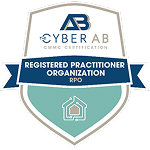INFOGRAPHIC
AI AND COMPLIANCE: THE NEW GOVERNANCE FRONTIER
Artificial intelligence is changing how organizations operate and how they manage risk. Based on data from the NAVEX 2025 State of Risk & Compliance Report, this infographic reveals how compliance, IT, and security leaders are navigating the fast-evolving world of AI governance.
- Learn where most organizations stand today: Only one in three have compliance deeply involved in AI decisions
- Explore the top risks shaping tomorrow’s regulatory environment, from data loss and intellectual-property misuse to bias and lack of visibility.
- Discover practical steps your leadership team can take to build responsible AI oversight, align with frameworks like ISO 42001 and NIST AI RMF, and turn innovation into a competitive advantage.
360 Cyber News and Resources
Explore a wealth of knowledge in our client stories, insightful blogs, cutting-edge white papers, and the latest press releases—your gateway to a repository of expertise and industry insights.







